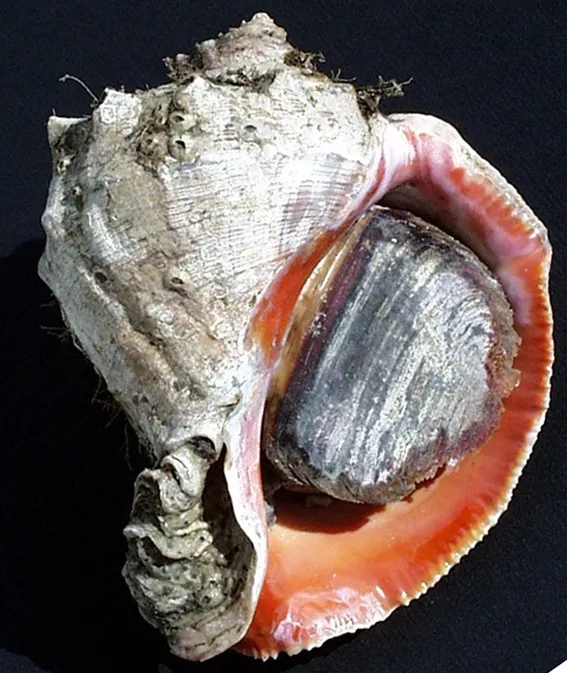Rapa Whelks: Invaders of the Chesapeake Bay

During the summer of 1998, scientists at the Virginia Institute of Marine Science made a series of disturbing discoveries in the Chesapeake Bay. In June, they collected an unusual specimen: a single marine snail that looked similar to some of the bay's native inhabitants but clearly had different markings. Researchers at the Smithsonian identified the creature as a veined rapa whelk (Rapana venosa), a species native to Asia.
As the summer wore on, more individual rapa whelks were spotted in the bay. Then in August, the researchers found a distinctive lemon-yellow egg mass in the James River estuary. They reared it in the lab, and over the span of a few weeks, hundreds of rapa whelk larvae hatched from the egg cases. The invasion, it seemed, was well underway.
While relatively new to the Chesapeake, the rapa whelk has a long history of invading new territory. From its native waters around Korea and Japan, this predatory mollusk has spread to the Black, Aegean, Adriatic, and Mediterranean Seas in the last century. Scientists believe it reached the Chesapeake by hitching a ride across the Atlantic, probably as larvae in a ship's ballast water. The snail's ability to hopscotch around has scientists worried that it could spread along the Eastern Seaboard, possibly as far as South Carolina and Massachusetts.
Whelks prey on clams, oysters, and other shellfish and pose a threat to the Chesapeake clam fishery. They may also compete with the bay's native species, such as indigenous knobbed and channeled whelks, and their lifecycle gives them some advantages over the locals. While the bay's native snails begin life on the ground, rapa whelks hatch as swimming larvae that settle to the ground after a few weeks. This allows them to travel in ballast water, evade some predators, and swim or ride the currents away from where they hatched. Once they do settle, rapa whelks grow their thick shells quickly, giving them more protection from predators than some native species.
Shortly after the first rapa whelks were found in the Chesapeake in 1998, the Virginia Institute of Marine Science set a "bounty" on the invading snails. The researchers offer a small payment to individuals for each live snail or shell they donate to the lab. Thousands of samples have been collected this way and used to map locations where the snails have settled in the Bay.
While stopping the invasion is probably no longer possible, knowing where the rapa whelks live now may help researchers predict the snail's next move. Scientists have learned that prevention is critical when it comes to invasions of non-native species. Once a marine species becomes established in a new location, it is almost impossible to eradicate.


